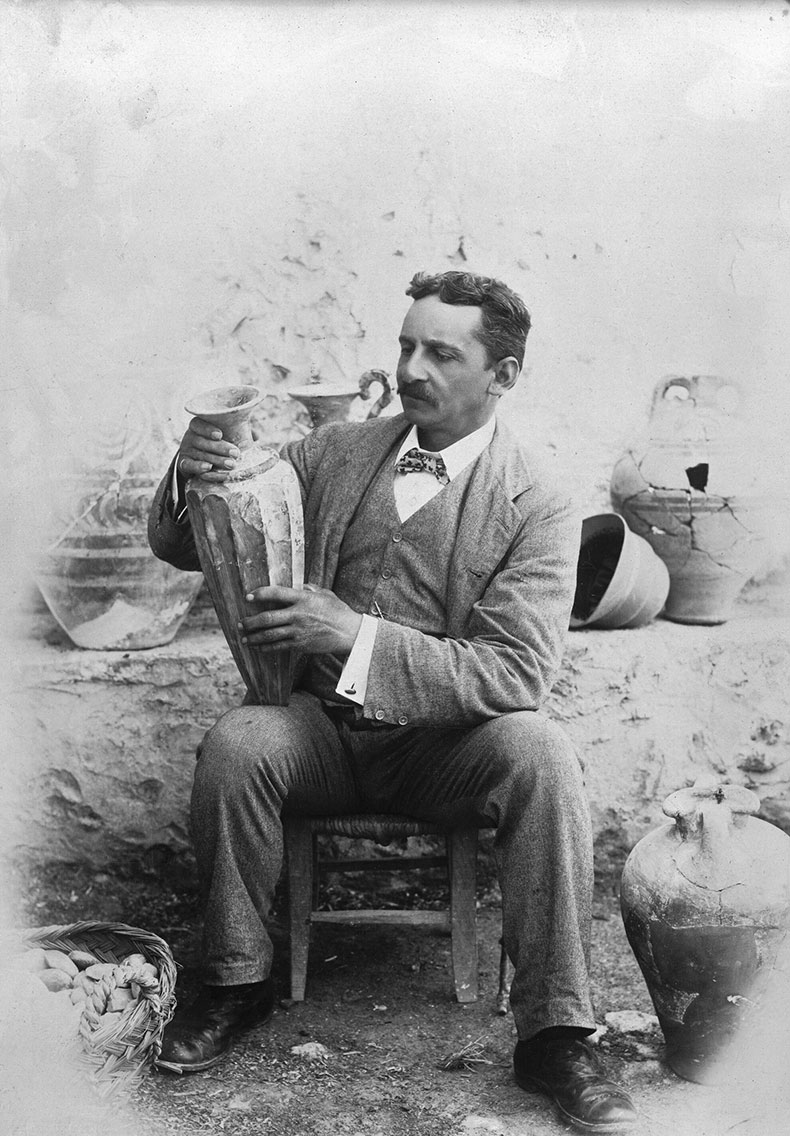The myth of the Labyrinth and the Minotaur at Knossos in Crete has captivated explorers and archaeologists for centuries. The Ashmolean Museum in Oxford (10 February–20 July) gathers together archival photographs and documents from the time of the discovery of the Palace of Knossos in 1900 alongside more than 200 objects from international collections. Sir Arthur Evans led the excavations at Knossos, coining the term ‘Minoan’ to describe the civilisations of the period and the objects discovered at the site. Many of Evans’s discoveries, such as a carved marble triton shell (pictured below), are included in the show alongside objects discovered during the post-war period, such as a Bronze Age dagger with gold and silver griffins on the hilt. A video work by the Turner Prize-winning artist Elizabeth Price imagines a room of museum curators arranging Evans’s archive. Find out more on the Ashmolean’s website.
Preview below | View Apollo’s Art Diary

The Poros Ewer, (1500–1450 BC). © Hellenic Ministry of Culture and Sports, General Directorate of Antiquities and Cultural Heritage, Heraklion Archaeological Museum

Sir Arthur Evans at the Palace of Knossos (1901). Photo: © Ashmolean Museum, University of Oxford

Carved limestone vessel in the shape of a triton shell (1600–1450 BC), Knossos Palace, Central Treasury. © Hellenic Ministry of Culture and Sports, General Directorate of Antiquities and Cultural Heritage, Heraklion Archaeological Museum
Unlimited access from just $16 every 3 months
Subscribe to get unlimited and exclusive access to the top art stories, interviews and exhibition reviews.














![Masterpiece [Re]discovery 2022. Photo: Ben Fisher Photography, courtesy of Masterpiece London](http://www.apollo-magazine.com/wp-content/uploads/2022/07/MPL2022_4263.jpg)
The threat to Sudan’s cultural heritage